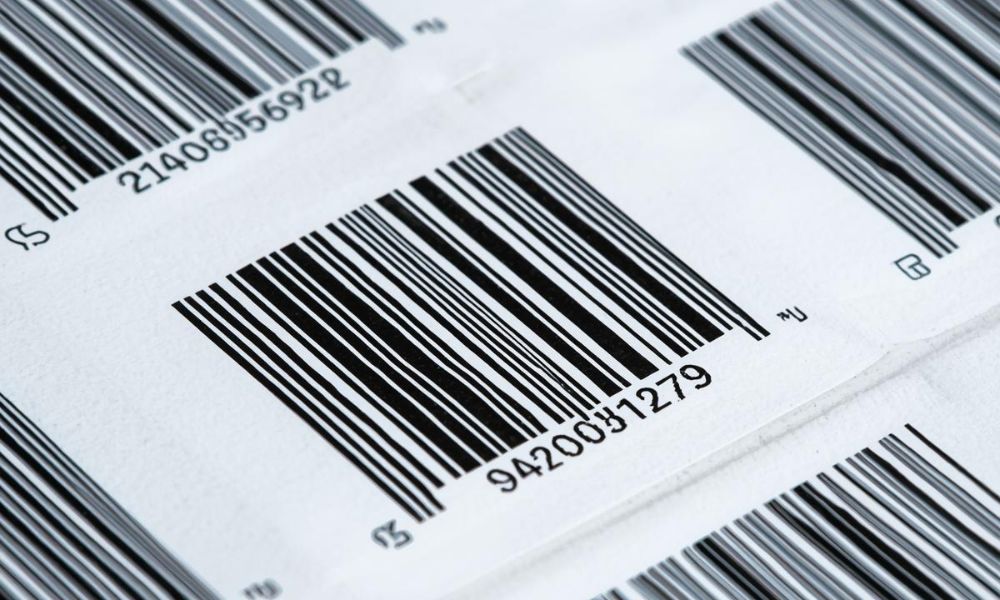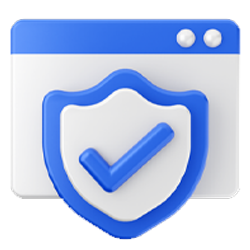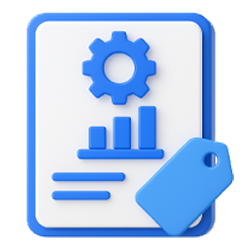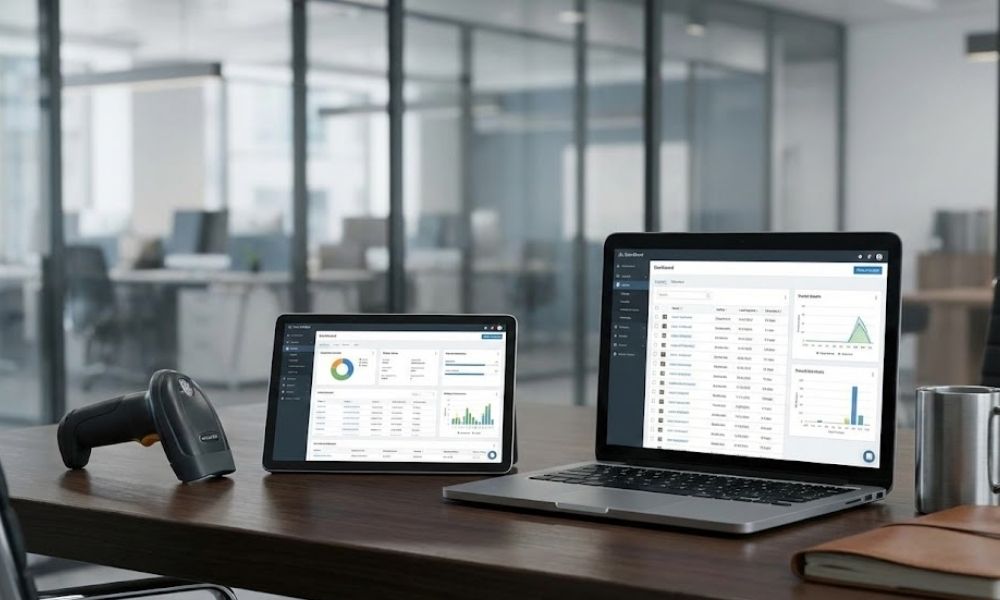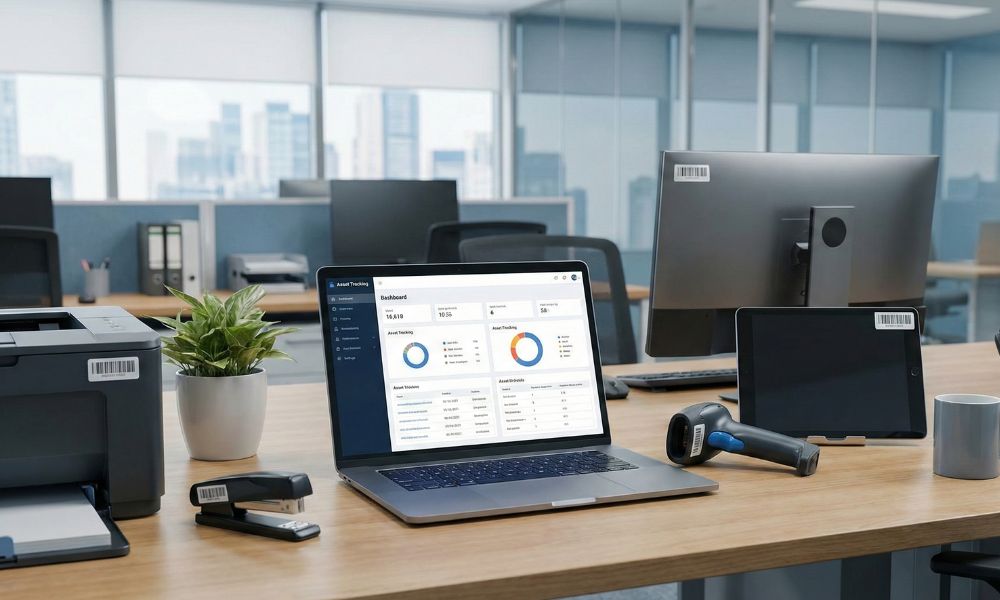Introduction
Managing physical assets can be challenging without a proper system. Lost or unaccounted assets waste time and money. In fact, roughly 10% of recorded assets in many companies are “ghost assets” (listed on the books but missing in reality). Poor tracking drains resources.
Barcode asset tracking offers a simple, cost-effective solution to these problems. It uses barcode labels and scanners to track assets with accuracy and ease, ensuring every item is accounted for.
See how barcode asset tracking technology can streamline your operations >>
This guide explains what barcode asset tracking is, how it works, its benefits, and how it compares to alternatives like RFID and different barcode types (1D vs 2D). We’ll also cover best practices for implementation, common pitfalls to avoid, and subtle tips for success.
What is Barcode Asset Tracking?
Barcode asset tracking involves labeling assets with unique barcodes to track them. Each barcode tag, often a sticker, links to the asset’s details in a database. Scanning the code with a reader or app retrieves or updates asset info instantly. Barcodes act like machine-readable license plates for equipment and inventory.
Barcodes come in 1D and 2D formats, such as UPC and QR codes. 2D barcodes store more data in less space than traditional 1D codes. Both formats help tag, scan, and track assets with greater accuracy. This replaces manual logging with a fast, reliable digital barcode system.
How Barcode Asset Tracking Works
A barcode asset tracking system is straightforward and relies on a few key steps:
-
Assign Barcodes to Assets:
Each asset is tagged with a unique barcode label (often an adhesive label or metal barcode tag). This label encodes a reference number or ID for the item. For example, a laptop might get a barcode that links to its asset ID in your database.
-
Scan the Barcodes:
Using a barcode scanner for asset management (which can be a dedicated scanner or a smartphone app), staff scan the asset’s barcode. The scanner reads the pattern and converts it into the asset’s ID instantly.
-
Update Asset Data:
The scanning device sends the asset ID to your asset tracking software. The software then retrieves or updates information like the asset’s location, condition, or custodian in real time. For instance, scanning during an audit can mark an asset as “verified” at a specific location.
-
Real-Time Monitoring:
Because scans update the database immediately, authorized users can see up-to-date information on all assets. A cloud-based barcode asset tracking software system allows teams across departments to access this data simultaneously, improving visibility and control.
In practice, Barcode asset tracking is simple—just print labels and scan. A maintenance team member can scan tools to log who checked them out and when. Meanwhile, an IT manager can reconcile equipment using a mobile app during inventory. Compared to manual methods, scanning saves time and eliminates typing or handwriting. Therefore, automated tracking keeps your asset register accurate and always up to date.
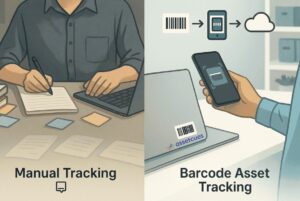
Benefits of Barcode Asset Tracking
Barcode asset tracking delivers significant benefits for organizations of all sizes. Here are some of the key advantages:
-
Low Cost, High ROI:
Barcoding is one of the most budget-friendly asset tracking methods available. Barcode labels cost just fractions of a cent, far less than RFID tags or GPS trackers. You can even use existing smartphones as scanners, avoiding the need for costly hardware. With low upfront costs and minimal equipment, barcode systems offer strong tracking and a high return on investment.
-
Simplicity & Ease of Use:
Asset barcode tracking is intuitive, requiring little training or technical expertise. Scanning works like taking a photo using mobile apps or handheld readers. Moreover, modern cloud systems remove complex setups or server maintenance entirely. This simplicity speeds implementation, fits workflows easily, and reduces IT support dependence.
-
Accuracy and Error Reduction:
By automating data capture, barcodes boost accuracy and eliminate manual entry errors. Each asset’s unique barcode prevents duplicates and removes ghost assets from records. Typically, 10% of assets in manual logs don’t exist due to errors. Barcode tracking keeps records in sync, supporting audits, reporting, and decisions. During audits, you can instantly scan items and log a compliant audit trail.
-
Efficiency & Time Savings:
Scanning a barcode takes seconds and saves time over manual entry or writing numbers. Tasks like inventory, check-ins, and locating equipment finish much faster with barcodes. Audit teams cut inventory time by 70% without searching or reconciling by hand. Employees focus on core duties instead of tracking, improving productivity. Real-time updates let anyone instantly access the latest asset status.
-
Improved Asset Control & Accountability:
Barcode tracking enforces accountability by linking each scan to a specific employee. Scanning during asset movement creates a clear usage history, deterring theft and unauthorized use. Tool tracking improves—you always know who has what and where it is. In IT, barcodes help track laptops and servers throughout their lifecycle. Overall, barcodes enhance control and reduce asset losses.
-
Scalability & Flexibility:
Barcode asset tracking scales easily—start in one department and expand organization-wide with ease. Since barcodes are universal and low-cost, you can tag all asset types affordably. The same system supports multiple asset categories and locations across industries. From hospitals to job sites, barcodes adapt to any use case. This flexibility suits IT, finance, operations, maintenance, and more.
-
Better Audits & Compliance:
Barcodes simplify compliance and audits by creating an automatic trail of asset activity. Auditors can quickly verify assets by scanning labels, avoiding paperwork and sampling errors. In regulated industries, barcodes log calibration and safety data accurately. Overall, barcode tracking ensures records are complete, current, and audit-ready for management and compliance teams.
![]()
In short, barcode asset tracking offers an affordable, efficient, and reliable way to manage assets. It delivers immediate cost savings and accuracy improvements, whether you’re tracking IT devices, industrial equipment, tools, or office assets.
Explore how barcode systems simplify tool tracking >>
Implementing Barcode Asset Tracking
Implementing a barcode asset tracking system in your organization involves a few practical steps. With careful planning, you can transition from manual tracking or spreadsheets to a barcode-based asset management process smoothly. Here’s a step-by-step guide to get started:
Explore how to set up a barcode asset tracking system >>
-
Define Goals and Take Inventory:
Begin by identifying what you want to achieve with barcode tracking. Set clear goals – for example, “reduce annual inventory time by 50%” or “eliminate missing tools.” Next, take stock of all assets you plan to track. Create or update your asset register (a list of assets with key details like descriptions, locations, and owners). This inventory will be the foundation of your barcode system.
-
Choose the Right Barcoding System:
Choose a barcode format and tag type that matches your asset needs. Use 1D barcodes for basic IDs or 2D QR codes to store more data. Select durable labels like polyester or metal for harsh environments or outdoor assets. Ensure label size and type fits the asset, and print them in-house or order pre-printed tags.
-
Tag All Assets:
Affix barcode labels to assets in visible, easily scannable locations. Avoid placing them on surfaces exposed to heat or frequent handling to prevent wear. Maintain consistency by tagging similar assets in the same position. As you tag items, scan and link the barcode ID directly to each asset’s record in your system.
-
Acquire Scanners or Mobile Apps:
Equip your team with an easy way to scan barcodes efficiently. Install a mobile tracking app on smartphones or tablets that use the camera as a scanner. You can also use USB or Bluetooth barcode scanners for computers or mobile devices. Choose scanners based on your environment to ensure convenient, reliable scanning for your team.
-
Implement Asset Tracking Software:
Select a barcode tracking software to store and manage all your asset-related data. The system holds the database, receives scans, and updates asset records in real time. Choose software that supports your barcode type, offers reports, and allows system integration. Cloud-based tools like AssetCues simplify access and setup, reducing IT overhead for your team.
Discover how to choose the right barcode asset tracking software >>
-
Train Employees and Set Procedures:
Even though barcode tracking is user-friendly, it’s important to train all users properly. Teach staff how to scan correctly and follow post-scan steps in the software system. Define clear procedures for asset intake, check-in/out, and regular inventory audits. Assign roles and stress scanning during asset moves to keep the database accurate.
-
Perform Regular Audits and Maintenance:
Schedule regular audits to ensure physical assets match records in the inventory system. Use barcode scanning during audits to identify any discrepancies caused by untracked movements. Routine audits reinforce system use and help prevent ghost assets from accumulating over time. Also, replace damaged barcode labels promptly to keep long-term tracking reliable and accurate.
-
Scale Up and Integrate:
Once barcode tracking works well in one area, gradually expand it to other departments. Roll it out in phases — starting with IT assets, then adding equipment, furniture, and more. If needed, integrate with systems like purchasing or ERP to streamline data flow. This makes barcode tracking part of your full asset and accounting workflow, not a silo.
By following these steps, you’ll establish a robust asset tracking barcode system. The implementation can be done gradually and with minimal disruption – for instance, tag new assets as they arrive and phase in older assets during scheduled inventories. Remember to leverage the simplicity of barcodes: once labels are on and people are trained, tracking becomes as easy as “scan and go.” Good software and clear procedures will support your team in maintaining the system over the long term.
Barcode vs RFID Asset Tracking
Barcodes are not the only asset tracking technology – RFID (Radio Frequency Identification) is another popular option. How do they stack up? Below is a comparison of barcode vs RFID asset tracking in key areas:
| Feature | RFID | Barcode |
| Data Storage | High (can store more data on tag) | Low (stores just an ID or few chars) |
| Scanning Range | Long – up to ~20 meters | Short – about 1–2 meters |
| Scanning Speed | Reads multiple tags simultaneously | Reads one tag at a time |
| Line-of-Sight | Not required (reads through objects) | Required (scanner must see barcode) |
| Durability | High – tags can be very rugged | Moderate – labels can wear or smudge |
| Cost | Higher initial costs (tags & readers) | Very low cost (pennies per label) |
| Implementation | More complex (infrastructure, tuning) | Simple and quick to set up |
| Security | Can encrypt tag data for security | Not easily secured (can be copied) |
Both technologies automate asset tracking but work differently in speed and scanning method. RFID tags use radio waves, enabling bulk scans without direct line-of-sight to items. Barcodes need visible codes and are scanned individually, usually one at a time. RFID is faster but costly, with complex setups and signal issues near metal or liquid.
>> Learn more about the differences between RFID and barcode asset tracking
Barcode
Barcodes excel in their simplicity and affordability. In fact, barcode technology is still the most widely adopted tracking method across industries like logistics, healthcare, and manufacturing. Anyone can print a barcode, and virtually any camera or scanner can read it.For many organizations, manually scanning each asset is a cost-effective trade-off. Barcode tracking works well when budgets are tight and periodic scans are enough. In contrast, RFID tracking suits large-scale needs requiring hands-free, continuous monitoring. It’s ideal for tracking pallets or IT assets across facilities.
RFID
In summary, use RFID if you require rapid, bulk scanning without line-of-sight and are willing to invest more upfront; use barcodes if you need a cost-effective, easy-to-implement system for reliable asset audits and tracking. Many organizations actually use a mix – barcodes for most assets, and RFID for a critical subset – to balance cost and functionality. The best choice depends on your asset volumes, environment, and tracking requirements.
1D vs 2D Barcodes for Asset Tracking
Barcodes come in two main flavors: 1D (one-dimensional) and 2D (two-dimensional). Understanding their differences will help you choose the right barcode type for your asset tracking needs:
-
1D Barcodes:
These are the classic lines-and-spaces codes you see on product packages. A 1D barcode encodes data in a series of parallel black bars and white gaps. They typically hold a short string of characters (often an ID number). In asset tracking, a 1D code might just contain an asset number that links to a database entry.
Advantages: 1D codes are simple and widely supported – any basic scanner can read them. They work well when you only need to store a small amount of information (like an ID or serial number).
Limitations: They have limited data capacity and require more label space for longer codes. Also, the scanner usually needs to be aligned straight on (line-of-sight) to read a 1D barcode; if the code or scanner is tilted too much, it may fail to scan. -
2D Barcodes (QR Codes, Data Matrix, etc.):
2D barcodes, like QR codes and Data Matrix, use square or dot patterns to encode data both vertically and horizontally. For example, QR codes are popular because smartphones can scan them easily. Compared to 1D, 2D barcodes store more data—from asset IDs to URLs or maintenance info. Additionally, they scan faster and from different angles, even if slightly damaged.
However, 2D codes require more advanced scanners, though most smartphones work well. They may be overkill if you only need a basic ID. Also, when scanned without the system, the output may be unreadable to users, often showing an encoded string or link
Bottom line: 1D barcodes are sufficient for most asset tracking scenarios that require just an identifier, whereas 2D barcodes (like QR codes) offer more flexibility to encode extra data or support quick mobile scans. You can even use both: perhaps print a QR code and a 1D code on the same label, covering all bases.
Common Barcode Asset Tracking Mistakes to Avoid
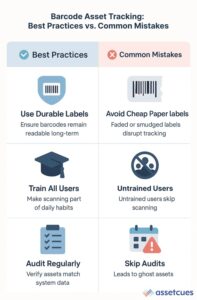
While barcode systems are straightforward, there are some common barcode asset tracking mistakes that can undermine their effectiveness. Be mindful of these pitfalls and take steps to avoid them:
-
Using Low-Quality Labels:
Not all barcodes offer the same durability or performance over time. Avoid cheap paper labels that fade, smudge, or peel, making assets untraceable. Use laminated, polyester, or metal tags suited to the asset’s environment. Investing a little more in durable labels prevents system gaps and future tracking issues.
-
Lack of Staff Training and Buy-In:
Implementing the system without proper training leads to low adoption and data gaps. If users don’t scan or rely on side spreadsheets, the system becomes unreliable quickly. Train employees to use the software and explain how it simplifies daily asset tasks. Assign custodians and stress that every asset movement or change must be scanned.
-
Inconsistent or Incomplete Tagging:
Another mistake is not tagging all assets or failing to update the asset list consistently. Unlabeled or untracked items can easily become sources of loss, error, or confusion. Make it policy to tag every new asset immediately and update records before disposal. Perform regular sweeps to catch any missed assets and maintain a complete inventory.
-
Not Performing Regular Audits:
Relying on barcodes doesn’t mean you can set it and forget it. Skipping audits allows small errors, like missed scans or damaged labels, to grow unnoticed. Conduct routine audits where staff scan each asset and match it to system records. This catches missing items early and keeps barcode tracking accurate and dependable.
-
Ignoring Data Maintenance and Backup:
Barcode tracking generates valuable data — but only if you consistently maintain the system. Update asset records promptly when locations or users change to keep data accurate. Run reports to analyze usage trends or identify overdue maintenance before issues arise. Back up asset data regularly and treat the barcode system as mission-critical to operations.
By being aware of these common pitfalls, you can take proactive steps to ensure your barcode asset management initiative delivers on its promises. With durable labels, proper training, complete asset tagging, routine audits, and good data practices, your barcode system will run smoothly and provide long-term value.
FAQ
Q. Can a smartphone be used as a barcode scanner?
A. Most modern asset tracking systems, including ours, support smartphone scanning. Any iOS or Android phone with a camera can scan barcodes using a mobile app—no special hardware needed. This cost-effective approach also leverages internet and GPS for real-time tracking.
Q. What is an asset barcode?
A. An asset barcode is a label on an asset containing a machine-readable code (barcode) that encodes the asset’s unique ID. Scanning this code with a reader or smartphone retrieves the asset’s information from a database, allowing quick identification and tracking.
Q. How to create a barcode for assets?
A. To create a barcode for an asset, first assign the asset a unique identifier. Then use an asset management system or online generator to convert that ID into a barcode image. Print the barcode label and stick it on the asset in a visible spot.
Q. What is better, a barcode or a QR code?
A. Both barcode types work well, and most systems—including ours—support them. QR codes store more data and scan easily with smartphones, ideal for added info. 1D barcodes scan better from a distance using laser scanners. Many companies use both formats, as long as each links correctly to the asset record.
Q. What are the advantages of barcoding assets?
A.
- Low cost (high ROI)
- Faster audits and inventory counts
- Greater accuracy (fewer errors)
- Enhanced asset accountability and visibility
Conclusion
Barcode asset tracking is a proven, cost-effective way to gain control over your organization’s assets. By tagging assets with barcodes and using simple scanners (even phone-based apps), you build a reliable, real-time picture of where everything is and who’s responsible for it. The system pays for itself through time savings, reduced losses, and better data for decision-making. Importantly, barcodes are highly accessible – almost any business can implement a barcode system with minimal IT effort and see immediate improvements in accuracy and efficiency.
Whether you’re managing a small office or a large enterprise, barcode asset tracking can scale to your needs. It’s an approachable technology that brings the benefits of automation (like fast audits and error-free records) without the hefty price tag of more complex systems. And if your operations grow, you can expand into related methods (like adding RFID for selective use cases or integrating IoT sensors), knowing that barcodes have already established a strong foundation of organized data.
In summary, barcode asset tracking helps you manage all critical assets easily. With proper planning, it saves money, prevents ghost assets, and avoids inventory issues. This simple technology ensures every item is accounted for and trackable at all times. Just one quick scan delivers powerful, hassle-free asset control.

